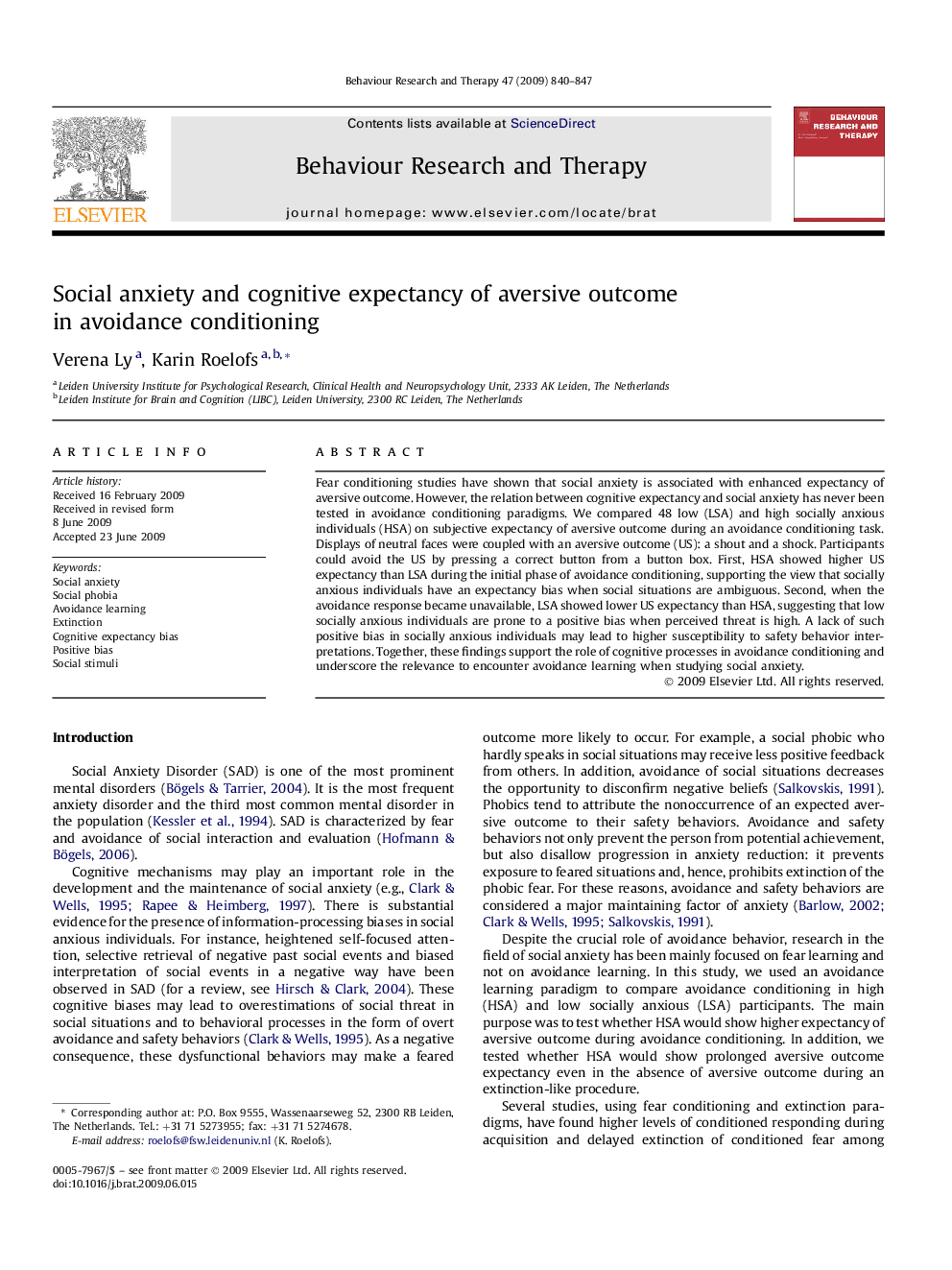| Article ID | Journal | Published Year | Pages | File Type |
|---|---|---|---|---|
| 10444571 | Behaviour Research and Therapy | 2009 | 8 Pages |
Abstract
Fear conditioning studies have shown that social anxiety is associated with enhanced expectancy of aversive outcome. However, the relation between cognitive expectancy and social anxiety has never been tested in avoidance conditioning paradigms. We compared 48 low (LSA) and high socially anxious individuals (HSA) on subjective expectancy of aversive outcome during an avoidance conditioning task. Displays of neutral faces were coupled with an aversive outcome (US): a shout and a shock. Participants could avoid the US by pressing a correct button from a button box. First, HSA showed higher US expectancy than LSA during the initial phase of avoidance conditioning, supporting the view that socially anxious individuals have an expectancy bias when social situations are ambiguous. Second, when the avoidance response became unavailable, LSA showed lower US expectancy than HSA, suggesting that low socially anxious individuals are prone to a positive bias when perceived threat is high. A lack of such positive bias in socially anxious individuals may lead to higher susceptibility to safety behavior interpretations. Together, these findings support the role of cognitive processes in avoidance conditioning and underscore the relevance to encounter avoidance learning when studying social anxiety.
Related Topics
Health Sciences
Medicine and Dentistry
Psychiatry and Mental Health
Authors
Verena Ly, Karin Roelofs,
